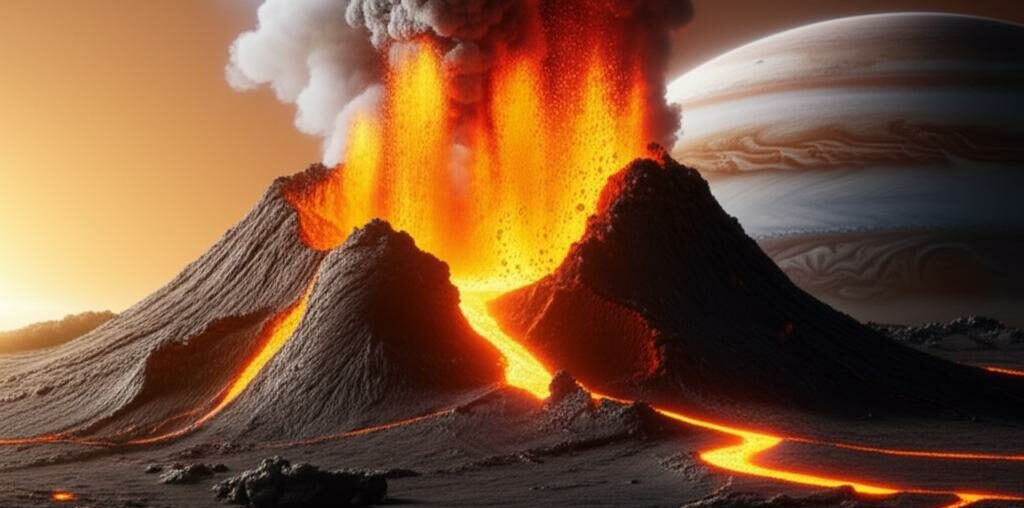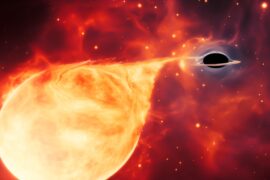10 Most Active Volcanoes Other Planets
When Voyager 1 and 2 flew through the outer Solar System in 1979, they revealed landscapes that looked more alive than many expected—geyser-like plumes, fresh lava flows and shifting bright spots on distant worlds.
Volcanism beyond Earth matters because it drives interior heat loss, reshapes surfaces, and in some cases exchanges material with atmospheres or subsurface oceans—critical ingredients for planetary evolution and potential habitability. From high-temperature silicate volcanism on Jupiter’s moon Io to salty cryovolcanic deposits on Ceres and geyser sampling at Enceladus, these processes give us direct windows into hidden interiors.
This roundup lists the 10 most active or best-documented volcanic sites beyond our planet, spanning boiling lava paterae, icy plumes sampled by spacecraft, and tantalizing exoplanet candidates. Expect mission-driven facts (Voyager 1979, Galileo 1995–2003, Cassini plume sampling from 2005, Dawn at Ceres in 2015) and clear explanations of why each site matters to planetary science.
Io: The Solar System’s Volcanic Powerhouse
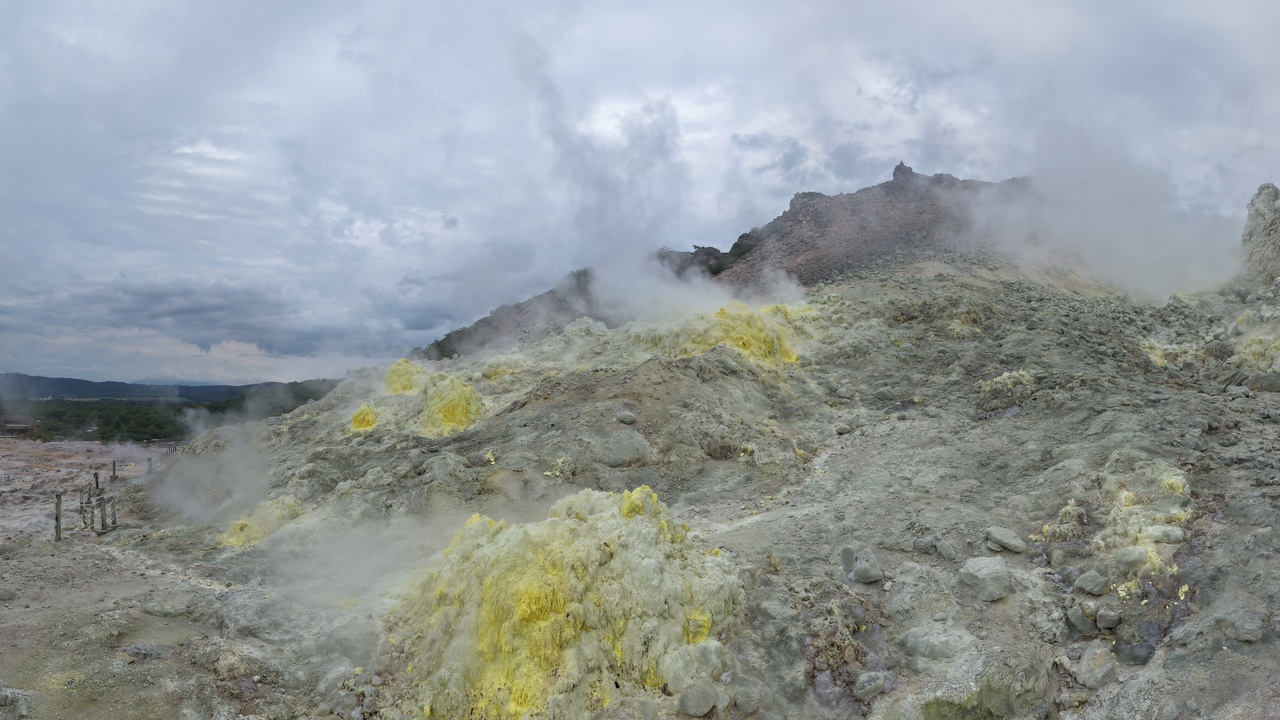
Io is the most volcanically active body we know, driven by intense tidal heating from Jupiter’s gravity as it flexes Io’s interior. That tidal flexing powers widespread silicate volcanism—lava lakes, long lava flows and large paterae (collapsed volcanic calderas)—and it continually resurfaces the moon.
Voyager 1 and 2 first revealed active plumes in 1979, and the Galileo mission (1995–2003) followed up with detailed imaging and infrared measurements. Ground-based infrared monitoring and Hubble observations continue to track eruptions today. Some Io eruption temperatures reached more than ~1,600 K, and thermal-power estimates for major centers like Loki Patera have approached ~10^12 watts during bright phases.
Because Io’s eruptions are hot silicate events rather than icy jets, the moon provides a natural laboratory for high-temperature volcanism under extreme tidal forcing. Studying Io helps constrain magma supply rates, resurfacing cycles, and how volcanism influences a moon’s thin atmosphere and plasma environment around Jupiter.
1. Loki Patera (Io)
Loki Patera is Io’s largest and most powerful volcanic depression, famous for bright, periodic resurfacing events seen in the infrared. Long-term monitoring shows roughly decadal brightening cycles that have been tracked since the 1980s.
Galileo infrared observations and ground-based telescopes documented sudden increases in thermal emission—events consistent with large-scale overturning of a lava lake or episodic resurfacing. Peak thermal output during bright phases has been estimated up to about 10^12 watts, making Loki a central case study for magma supply and resurfacing mechanics.
2. Pele (Io)
Pele is one of Io’s most visually striking volcanoes, first imaged by Voyager in 1979 with red-orange plume deposits surrounding its vent. Subsequent Galileo and Hubble observations confirmed persistent activity at the site.
Pele’s plume heights have been reported in the literature from tens up to a few hundred kilometers, and its emissions are rich in sulfur and SO2. Episodic high-temperature eruptions and associated deposits reveal how volatile chemistry interacts with Io’s surface and tenuous atmosphere.
3. Tvashtar Catena (Io)
Tvashtar is a clustered volcanic region that produced spectacular eruptions imaged by Galileo in 1999–2000 and later by New Horizons in 2007. The activity included towering plumes and rapidly emplaced lava flows.
Images showed complex paterae and evidence for fast-moving, energetic lava and plume columns—signatures of localized high-energy eruptions. Tvashtar illustrates how stress concentration and shallow magma transport can drive repeated explosive events on Io.
4. Prometheus (Io)
Prometheus is notable for its long-lived effusive activity; it was discovered by Voyager in 1979 and has shown repeated thermal anomalies in Galileo data and ground-based infrared observations. The site has produced persistent lava flows that extend for tens of kilometers.
Because Prometheus exhibits sustained, effusive eruptions over decades, it’s especially useful for studying how lava flows spread and cool under Io’s low-pressure, sulfur-rich environment, and for estimating surface renewal rates across the moon.
Cryovolcanism: Icy Worlds That Spout and Surface with Salts
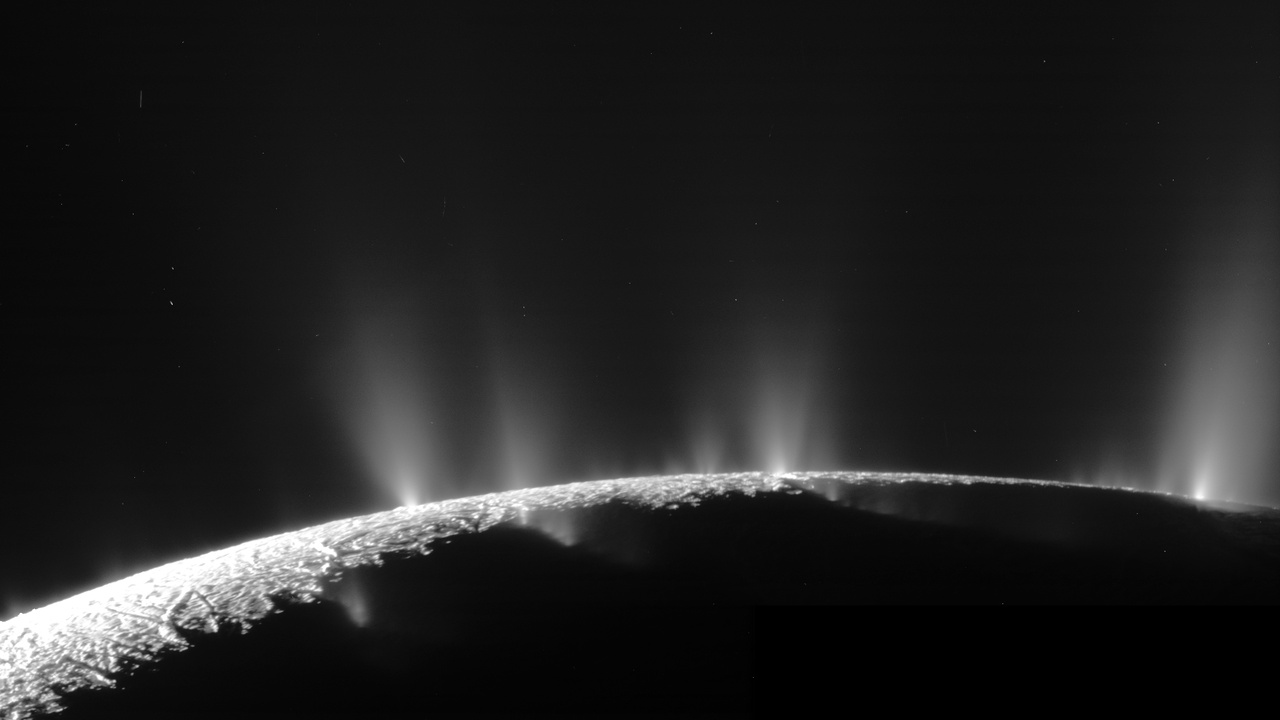
Cryovolcanism refers to eruptions of volatile materials—water, ammonia, CO2, or brines—rather than molten rock. These icy eruptions matter for astrobiology because plumes can directly sample subsurface reservoirs and reveal the chemistry of interior oceans or brine pockets.
Missions like Cassini at Saturn, Voyager 2 at Neptune, and Dawn at Ceres provided definitive evidence for ongoing or recent cryovolcanic activity: Cassini sampled Enceladus’ plumes beginning in 2005, Voyager 2 imaged Triton’s geysers in 1989, and Dawn revealed bright salts at Ceres after arriving in 2015.
Plumes and fresh surface deposits are among the most direct indicators of active or geologically young cryovolcanism, and they give scientists rare opportunities to study subsurface composition without drilling.
5. Enceladus — South Polar Plumes
Enceladus’ tiger-stripe fractures at the south pole produce continuous plumes of water vapor, ice grains, salts and organic molecules that Cassini first directly sampled starting in 2005 (and repeatedly thereafter).
Cassini detected water vapor, icy grains with sodium salts and simple organics, and gravity and geophysical analyses in the 2010s (notably around 2015) strengthened the case for a regional or global subsurface ocean. Those plume samples are direct compositional windows into a potentially habitable environment.
Because the plumes are actively venting, Enceladus remains one of the highest-priority targets for follow-up missions focused on habitability and ocean chemistry.
6. Triton — Voyager’s Geysers
Voyager 2’s 1989 flyby revealed dark plumes and geyser-like activity on Neptune’s moon Triton, making it one of the first outer‑Solar‑System bodies shown to be active after Earth.
The plumes observed by Voyager reached heights up to roughly 8 kilometers and are generally interpreted as nitrogen-driven jets powered by seasonal heating and sublimation beneath a translucent layer of surface frost. Subsequent ground-based observations and modeling continue to study plume mechanics and seasonal cycles.
Triton remains a compelling destination for future exploration as a cold, active world with processes that may echo those on early Kuiper Belt objects.
7. Ceres — Occator and Ahuna Mons (Cryovolcanic Evidence)
Dawn arrived at dwarf planet Ceres in 2015 and mapped bright deposits in Occator crater along with a solitary dome called Ahuna Mons—features best explained by cryovolcanic or cryomagmatic processes.
Occator’s central bright spots contain sodium carbonates and other salts, implying recent upwelling of briny material. Ahuna Mons is a roughly 4-km‑high dome interpreted as a cryovolcanic edifice formed by extruded cryolava or salt-rich cryomagma.
The relative youth of these deposits (geologically recent resurfacing) suggests that Ceres’ interior remained capable of mobilizing brines into the shallow crust within the last few hundred million years—a blink in planetary terms.
Silicate and Candidate Volcanism on Terrestrial Worlds and Exoplanets
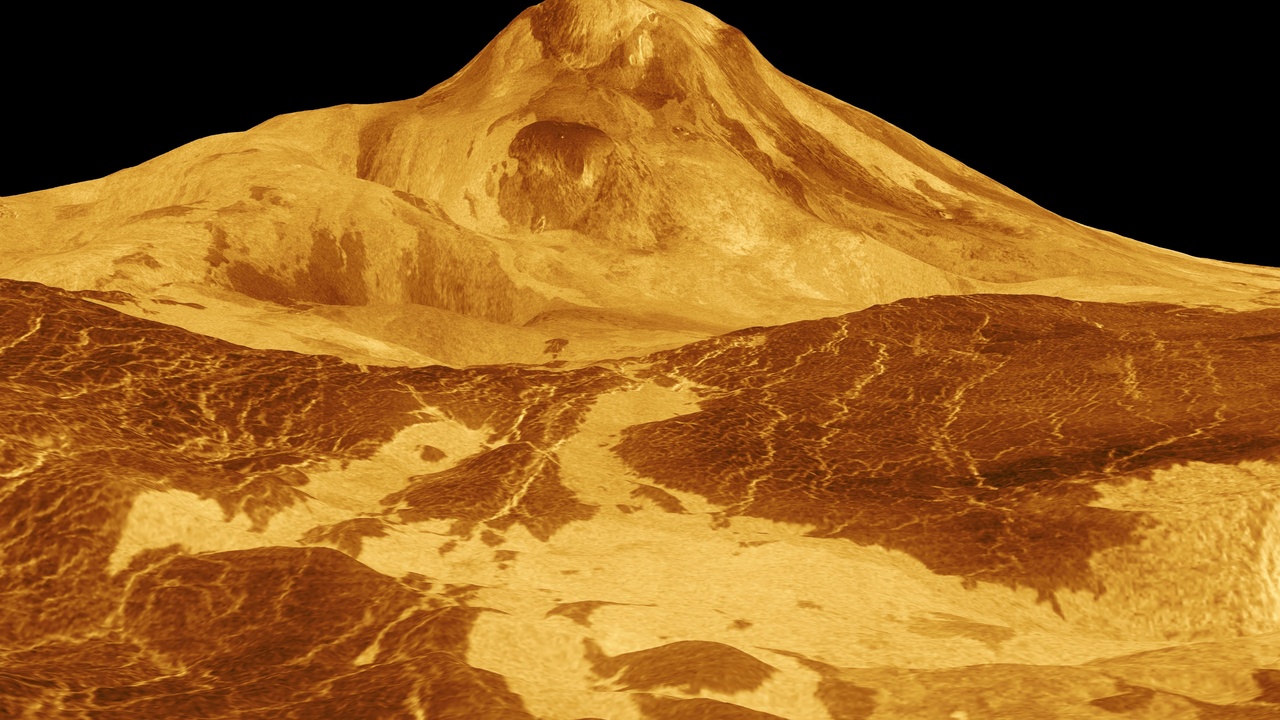
Besides Io and icy moons, several terrestrial worlds and even some exoplanets show signs of modern or recent volcanism. Observational certainty varies: some sites are well-documented active vents, others are strong candidates based on surface freshness or thermal variability.
Across these silicate and icy locales, the active volcanoes other planets we highlight range from radar‑mapped shields on Venus to young fissure flows on Mars and thermal variability on lava-like exoplanets—each backed by mission-era data (Magellan, MRO, Spitzer) and model work.
8. Maat Mons and Other Candidate Volcanoes (Venus)
Maat Mons is a large shield volcano on Venus imaged in Magellan radar data from the early 1990s. It’s one of several constructs suggesting a volcanically active resurfacing history on the planet.
Evidence for recent activity includes radar-mapped flow morphologies from Magellan (1990–1994) and transient near-infrared hot‑spot detections reported in papers from the 2000s–2010s using Venus Express and Akatsuki data. Some observations are contested, but if real, Venusian eruptions would have major implications for atmospheric composition and surface age estimates.
Confirming active volcanism on Venus is a key goal for planned missions that aim to monitor thermal transients and return higher-resolution atmospheric and surface data.
9. Cerberus Fossae / Elysium (Mars) — Candidate Recent Flows
Mars hosts remarkably young volcanic terrains in places. Cerberus Fossae and areas of Elysium Planitia show flow morphologies and crater counts that some teams interpret as eruptions in the geologically recent past—ages ranging from a few thousand to a few million years based on crater‑count studies.
Mars Reconnaissance Orbiter (MRO) imaging, combined with stratigraphic analyses and updated crater statistics (papers from roughly 2011–2017 and later), produced claims of very young lava flows. The interpretations are still debated, but Mars remains a plausible site for episodic recent volcanism.
These candidate young flows matter because they change how we think about Mars’ thermal evolution and the potential for near-surface geothermal habitats in the past few million years.
10. 55 Cancri e and Lava Worlds (Exoplanetary Volcanism Candidates)
55 Cancri e is an ultra-short-period exoplanet with an orbital period of about 0.74 days and strong thermal emission variability observed in Spitzer data (mid-2010s). Some researchers interpret the variability as signs of a molten surface, lava lakes, or volcanic outgassing driven by tidal and stellar heating.
Observations are indirect—phase curves and infrared monitoring give us temperature maps but not a direct picture of lava. Models that include tidal heating and lava‑ocean dynamics can reproduce some of the signals, but atmospheric explanations remain possible. Still, lava-world candidates expand our view of how extreme heating sculpts rocky exoplanets.
Summary
- Io remains the Solar System’s volcanic powerhouse, with hotspots like Loki Patera producing thermal power up to ~10^12 W and eruption temperatures exceeding ~1,600 K.
- Enceladus’ south polar plumes (sampled by Cassini beginning in 2005) supply water, salts and organics—direct probes of a subsurface ocean and habitability potential.
- Ceres’ Occator bright salts and the ~4‑km Ahuna Mons point to relatively recent cryovolcanic resurfacing revealed by Dawn (2015).
- Voyager-era detections (1979, 1989) plus later missions (Galileo, Cassini, MRO, Magellan, Dawn) show a wide range of activity—from silicate lava to cold, salty geysers—and several sites remain candidate active volcanoes on Venus, Mars and even exoplanets like 55 Cancri e.
- Upcoming and proposed missions—Europa Clipper, JUICE, future Venus and outer‑Solar‑System probes—will sharpen our ability to detect and characterize volcanism beyond Earth; follow mission updates to watch this story unfold.
Enjoyed this article?
Get daily 10-minute PDFs about astronomy to read before bed!
Sign up for our upcoming micro-learning service where you will learn something new about space and beyond every day while winding down.

